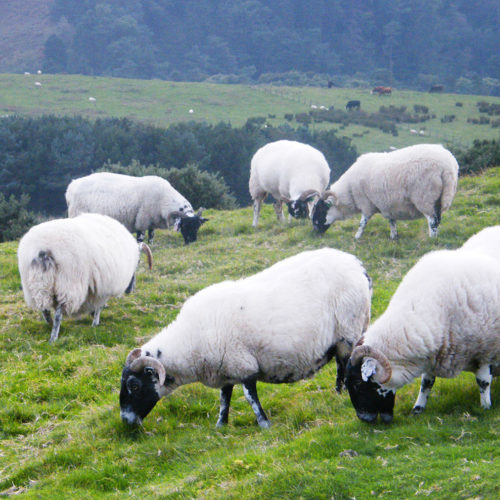Toxoplasmosis
3 October 2022With current concerns over the availability of Toxovax for preventing a toxoplasmosis outbreak in a flock, we look at other preventative strategies. Toxovax is currently the only vaccine available on the UK market. This vaccine is administered to ewes at least three weeks ahead of tupping.
Toxoplasmosis is an infectious disease that is not spread between sheep, meaning mixing older vaccinated ewes with ewe lambs will not give the flock immunity from toxoplasmosis. It is caused by the protozoan parasite Toxoplasma gondii which is an intestinal parasite of cats, with sheep being intermediate hosts. Sheep are infected when they consume feed, forage or water that has been contaminated with infected cat faeces (and therefore oocysts). If infection occurs before or in early pregnancy, ewes are likely to reabsorb the pregnancy resulting in more empty ewes at scanning. As the pregnancy progresses, abortion is the more likely outcome. After day 70 of pregnancy, the ewe is more likely to give birth to a live but infected lamb. Live but infected lambs may appear weaker or be born with siblings that are dead or appear to be underdeveloped. Once a ewe has been infected, she develops immunity which protects her against the disease in future pregnancies.
Prevention strategies
- Neuter female cats to prevent males travelling between farms and an increased cat population.
- Keep a healthy adult population of neutered cats on the farm to prevent feral young or pregnant cats arriving on farm.
- Ensure sheep concentrates and forage are not accessible to cats to prevent faecal contamination.
- Assess the risk of grazing fields for toxoplasmosis contamination and run young and naïve ewes on the ground pre tupping, moving them to lower risk fields for pregnancy e.g. fields beside a village may be high risk.
Use of medicated feed with decoquinate (Deccox) would be another preventative strategy, this is an expensive route. This is licenced as an aid in the prevention of Toxoplasmosis when fed at a rate of 2mg/kg continuously for 14 weeks prior to lambing, or 5 weeks from tupping. This is a very prolonged feeding period, supplementary feed is not typically nutritionally required during mid pregnancy. The recommended level of feeding to ensure a target intake of 2mg decoquinate per kg of bodyweight would be as follows,
| Target intake 2mg/kg BW | 80kg ewe | |
| Mid Pregnancy | 250g / 50kg BW / day | 400kg/day (0.40kg) |
| Late Pregnancy | 500g / 50kg BW / day | 800kg/day (0.80kg) |
*allowing for 6.68kg of premix per tonne mid pregnancy and 3.34kg of premix per tonne in late pregnancy
This would equate to a ewe requiring 42kg concentrate/head over pregnancy or 4.2tonnes for a 100 ewe flock.
If this route was chosen, then involving a ruminant nutritionist to help formulate a diet to minimise the risk of foetal oversize as a consequence of the extended period of supplementary feeding is advised. If medicated feed is offered only later in pregnancy, then benefits will only be seen if exposure to the parasite occurs after the medicated feed is started.
Kirsten Williams
Related FAS Materials;
Sign up to the FAS newsletter
Receive updates on news, events and publications from Scotland’s Farm Advisory Service

